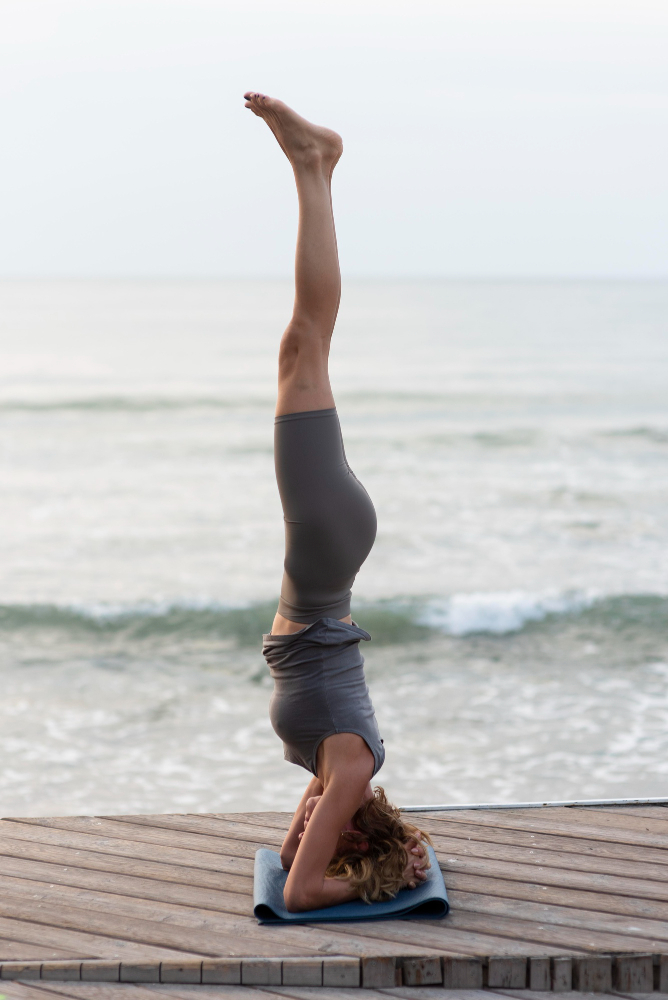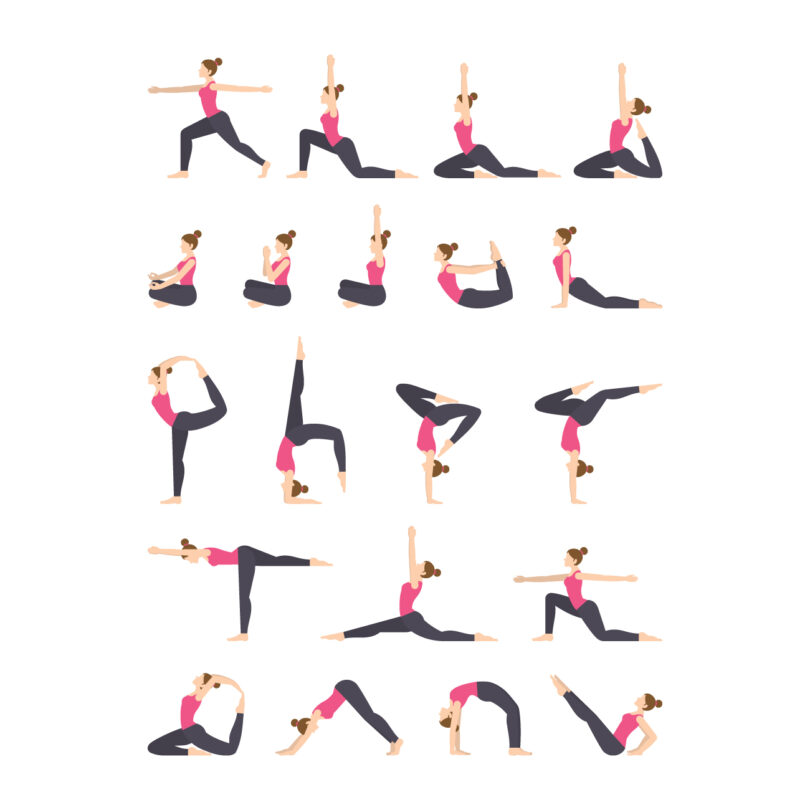Welcome, fellow yoga enthusiasts, to a guide that will elevate your practice—literally! In this article, we’ll explore the fascinating world of arm balance yoga poses. Whether you’re a beginner or a seasoned practitioner, these seven-arm balances are guaranteed to challenge your strength, flexibility, and focus.
Table of Contents
What Are Arm Balance Poses?
Arm balance poses are yoga postures that require you to balance most of your body weight on your arms and hands. They are often dynamic and invigorating, helping you build upper body strength while testing your focus and perseverance.
Benefits of Arm Balance Yoga Poses
Arm balance yoga poses provide a range of benefits that enhance both physical and mental health:
- Strength Building: These poses are excellent for developing upper body and core strength. They engage the arms, shoulders, wrists, and abdominal muscles, creating a strong foundation for stability.
- Balance and Coordination: By requiring you to distribute your weight evenly and maintain your center of gravity, arm balances improve your overall sense of balance and coordination. They challenge your spatial awareness as you find equilibrium in your hands.
- Focus and Concentration: Balancing on your hands demands intense concentration and focus. Practicing these poses enhances mindfulness and helps train your mind to be present, reducing distractions and increasing mental clarity.
- Confidence Boost: Successfully holding challenging arm balances builds confidence and encourages a sense of accomplishment. They empower you to step out of your comfort zone and tackle challenges with perseverance.
- Flexibility: Although arm balances primarily build strength, they also increase flexibility in the wrists, shoulders, and hips. They often involve dynamic movements that improve the range of motion.
- Stress Relief: The focus required for arm balancing provides a mental break from daily stressors. By channeling your attention to physical practice, you can let go of worries and cultivate a calm, focused state.
- Resilience and Patience: Arm balances demand patience and resilience. Developing the strength, balance, and technique to perform them often requires repeated practice. Over time, this builds discipline and teaches you to embrace progress over perfection.
- Energy and Circulation: These poses invigorate the body by increasing blood flow and circulation. They also stimulate the nervous system, providing a natural boost of energy.
Incorporating arm balances into your yoga practice can promote overall fitness and personal growth while delivering an array of holistic benefits.

Related Article: 7 Yoga Poses for Beauty
Precautions Before Attempting Arm Balances
- Warm-Up: Prepare your body with light cardio and stretching.
- Consult a Professional: Seek guidance if you’re unsure about your form.
- Modify if Necessary: Use props or modify poses to suit your level.
- Listen to Your Body: Avoid overexertion to prevent injury.
Crow Pose (Bakasana)
The Crow Pose is an excellent starting point for arm balance enthusiasts. Here’s how to do it:
- Position: Begin in a squat with your feet close together and knees wide apart.
- Placement: Plant your hands firmly on the mat.
- Lift-Off: Shift your weight forward onto your hands, lifting your feet off the ground.
- Balance: Maintain focus while keeping your core tight and arms engaged.
Side Crow Pose (Parsva Bakasana)
The Side Crow Pose builds upon the Crow by adding a twist:
- Twist: From a squat position, twist your torso to one side.
- Anchor: Place your hands on the mat, shoulder-width apart.
- Lift: Lean forward to shift your weight onto your arms, raising both feet off the floor.
Firefly Pose (Tittibhasana)
The Firefly Pose requires significant core strength and flexibility:
- Stretch: Start with your legs wide apart and your hands firmly placed on the mat.
- Lift: Slide your arms under your thighs and slowly lift your feet off the floor.
- Extend: Straighten your legs forward while balancing on your hands.
Peacock Pose (Mayurasana)
This pose demands core control and arm strength:
- Position: Kneel and place your hands on the mat, fingers pointing backward.
- Balance: Lean forward, placing your elbows on your abdomen.
- Lift: Straighten your legs behind you as you support your body weight on your arms.
Eight-Angle Pose (Astavakrasana)
This poses challenges to your flexibility and strength:
- Cross-Legged: Sit cross-legged and twist your body to one side.
- Anchor: Place your hands on the mat while securing your legs on one arm.
- Lift and Extend: Push off with your hands and extend your legs outward, maintaining balance.
Flying Pigeon Pose (Eka Pada Galavasana)
This pose is a fusion of flexibility and power:
- Pigeon Pose: Begin in Pigeon Pose with your front leg bent.
- Anchor: Place your hands on the mat and lean forward.
- Lift: Hook your front leg around one arm and lift your back leg off the floor.
Scorpion Pose (Vrischikasana)
The Scorpion Pose is a striking backbend that demands intense balance:
- Forearm Stand: Begin in a forearm stand, with your elbows shoulder-width apart.
- Bend: Slowly arch your back, bringing your feet towards your head.
- Balance: Engage your core to stabilize and hold the position.
Tips for Building Strength and Balance
- Practice Consistently: Regular practice builds familiarity and muscle memory.
- Strengthen Core: A strong core is essential for control and stability.
- Use Props: Blocks or straps can help modify poses for beginners.
- Focus on Breath: Breathing calms your nerves and helps maintain balance.
Overcoming Fear and Frustration
- Take It Slow: Start with simpler poses before progressing.
- Find Support: Practice with a wall or have a partner assist you.
- Celebrate Progress: Acknowledge each step forward, no matter how small.
- Visualize Success: Picture yourself nailing the pose before attempting it.

Bringing It All Together: Arm Balance Yoga Poses
Arm balance yoga poses are dynamic, challenging postures that require strength, focus, and balance. They are great for improving upper body strength, enhancing concentration, and building core stability. Here are some common arm balance poses that can help bring it all together:
- Crow Pose (Bakasana): Start in a squat, plant your palms shoulder-width apart on the mat, and place your knees on the backs of your upper arms. Engage your core as you shift forward, lifting your feet off the ground and balancing on your hands.
- Side Crow (Parsva Bakasana): From a squat, twist your torso to the right, placing your hands on the mat and resting your right hip or thigh on your right elbow. Engage your core to lift both feet and balance.
- Firefly Pose (Tittibhasana): Begin in a squat and place your hands behind your feet. Lift your hips as you straighten your legs, balancing on your hands while your legs extend forward.
- Eight-Angle Pose (Astavakrasana): Sit with your legs extended, cross one ankle over the opposite thigh, and place your hands on the mat. Bend your elbows, engage your core, and lift your hips and feet as you twist, extending your legs out to the side.
- Peacock Pose (Mayurasana): Kneel on the mat and place your palms on the floor, fingers pointing backward. Lean forward with your elbows pressing into your abdomen and your legs extended behind you. Balance by lifting your legs off the ground.
- Flying Pigeon (Eka Pada Galavasana): From a standing position, bring one ankle over the opposite thigh, bend forward, and place your hands on the mat. Lift your grounded foot to balance on your arms while extending the other leg back.
- Handstand (Adho Mukha Vrksasana): Start in Downward-Facing Dog (Adho Mukha Svanasana), then walk your feet closer to your hands. Shift your weight forward, lift one leg, and hop your grounded foot off the mat to come into a full handstand. Press through your fingers for balance.
- Forearm Stand (Pincha Mayurasana): From Dolphin Pose (Ardha Pincha Mayurasana), shift your weight forward and kick up with one leg to lift into a forearm stand. Keep your core engaged to maintain stability.
Before attempting these poses, make sure to warm up your body and practice basic foundational poses. Using props, walls, or a spotter can provide support as you gradually build the confidence and strength needed for arm balances.
Related Article: Gentle Yoga for Mature Bodies
Frequently Asked Questions (FAQs)
1. Can beginners practice arm balance poses?
Yes, beginners can start with simpler poses like Crow Pose and Side Crow Pose. Use props and modify poses as needed.
2. How long should I hold arm balance poses?
Start by holding for a few breaths and gradually increase the time as you build strength and familiarity.
3. What should I do if I feel pain while practicing arm balances?
Stop immediately and rest. Pain often signals incorrect form or overexertion. Consult a yoga instructor or healthcare professional if needed.
4. Can I practice arm balance poses every day?
Yes, with mindful practice and proper warm-up, you can integrate arm balances into your daily routine.
5. How can I prevent wrist pain while doing arm balances?
Warm up your wrists with stretches and strengthen them over time. Use wrist-friendly variations or props to minimize pressure.







